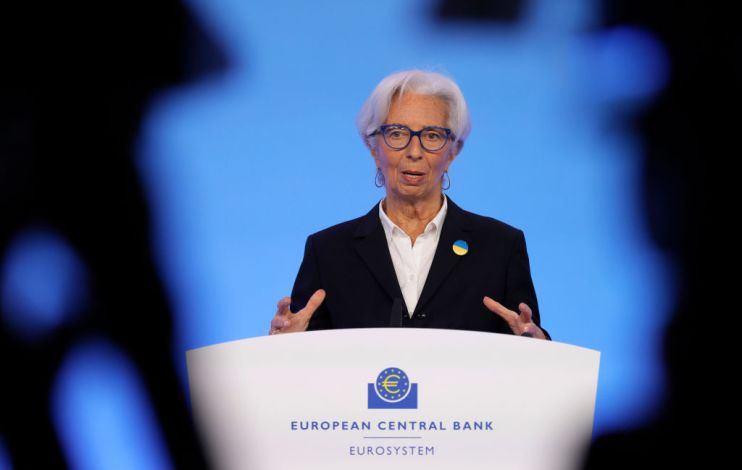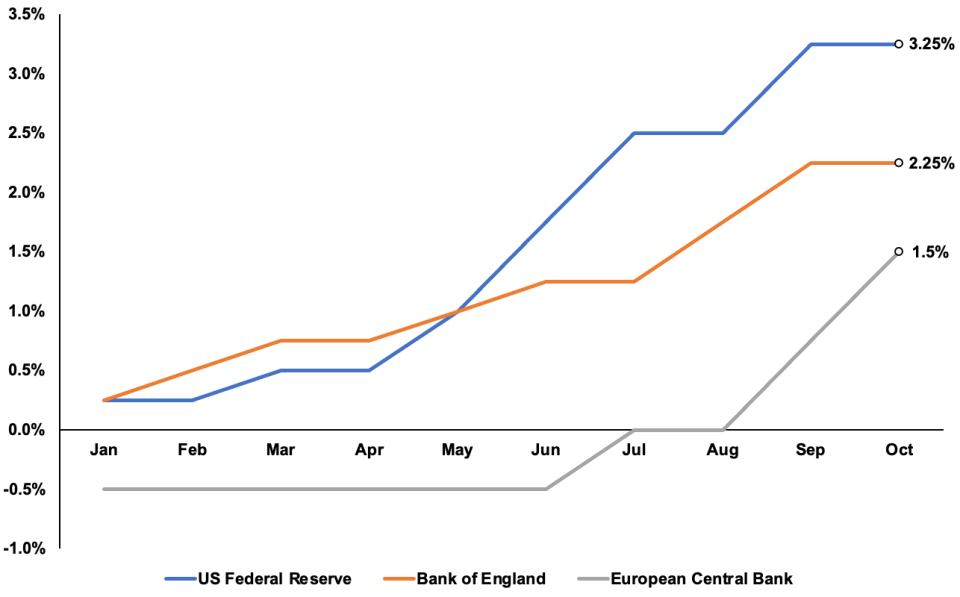ECB fires second successive jumbo rate hike in push to end Europe’s cheap money addiction

The European Central Bank (ECB) today fired its second jumbo rate hike in a row in another sign that it is putting years of ultra-cheap money to the sword.
The central bank that oversees the financial system of the 19 countries using the euro lifted borrowing costs 75 basis points to 1.5 per cent as it steps up the fight against record price rises.
ECB president Christine Lagarde and co said the move was required to “ensure the timely return of inflation” to its two per cent target.
Lagarde said the governing council expects to keep raising rates in the coming months. She did not outline details on how the ECB will shrink its balance sheet by selling bonds it hoovered up during the Covid-19 crisis, a process known as quantitative tightening.
Prices are up 9.9 per cent across the common currency union, the quickest acceleration since the creation of the euro in 1999.
The size of the hike was in line with analysts’ expectations, but underlines the sharp policy shift the ECB and the world’s biggest central banks have undergone this year to tame a huge price surge.
Lagarde and the rest of the ECB’s governing council had kept eurozone rates in negative territory for several years in a bid to lift growth in the bloc out of the mire and raise below target inflation.
But, at the beginning of summer, the Frankfurt head quartered central bank signed off a 50 basis point rise, its first hike since 2011.
September’s first 75 basis point rise pushed rates to 0.75 per cent, the first time they have been positive in over a decade.
US, UK and eurozone interest rates have risen sharply this year

The euro fell 0.77 per cent against the US dollar on the news. The pan-European Stoxx 600 index dropped 0.78 per cent.
Earlier this year, the common currency slid below parity with the greenback, driven by fears over the bloc falling into a deep and long recession caused by energy prices soaring after Russia’s invasion of Ukraine.
It has since returned above parity.
The dollar has strengthened significantly against the world’s major currencies this year, including the pound, driven by the US Federal Reserve lifting borrowing costs at the fastest pace since the early 1980s, when Paul Volcker led the central bank.
Fed chair Jerome Powell and the federal open market committee have sent borrowing costs 300 basis points higher since March.
That rapid rate hike cycle has widened the difference between US debt returns and other countries’ debt, known as spreads, which has stimulated demand for American assets. That has sent the greenback on an upward tear.
The pound has regained ground since plunging to a record low against the dollar after former prime minister Liz Truss’s mini-budget on 23 September spooked markets.
UK borrowing costs are also trading around the same level they were before Truss’s first chancellor Kwasi Kwarteng delivered what was billed as the pair’s flagship growth plan last month.
The Bank of England next Thursday is expected to follow the ECB’s lead and lift rates 75 basis points. As is the Fed on Wednesday.